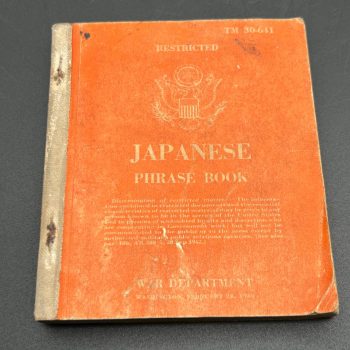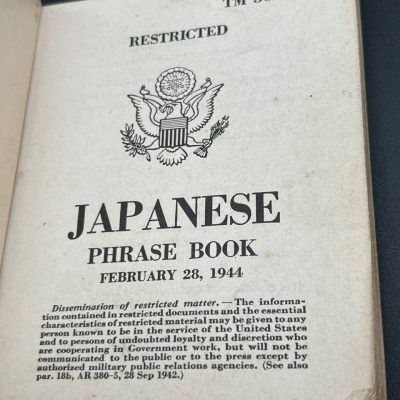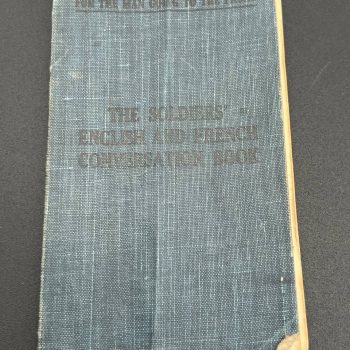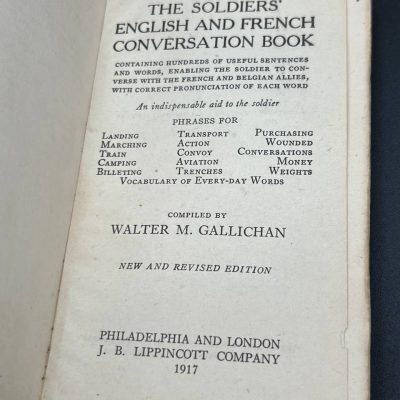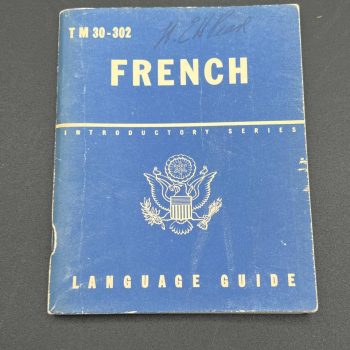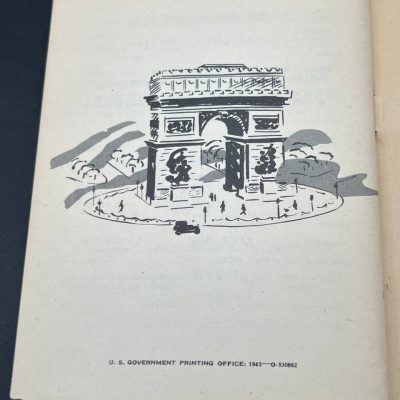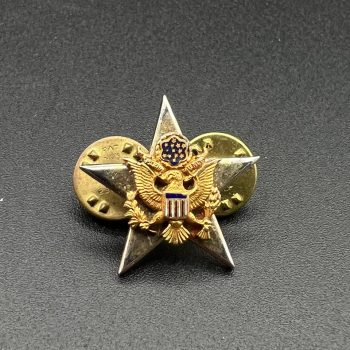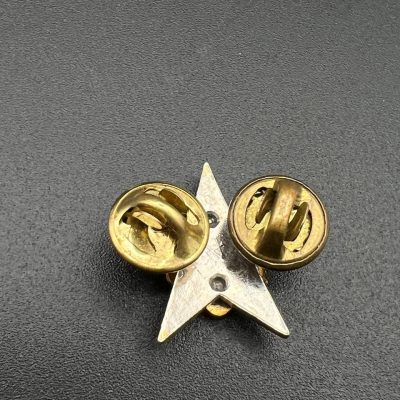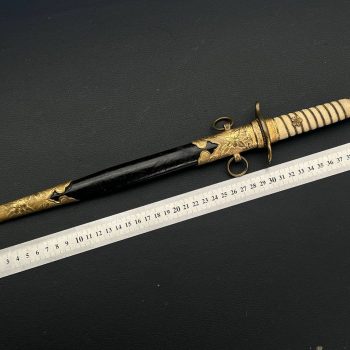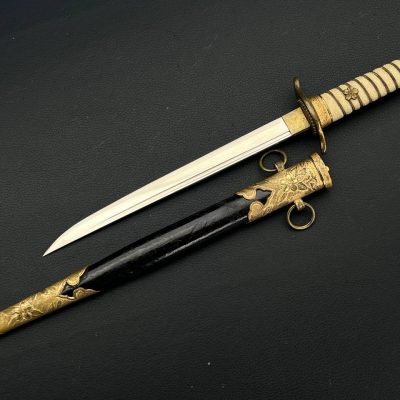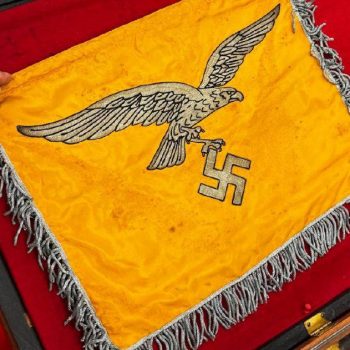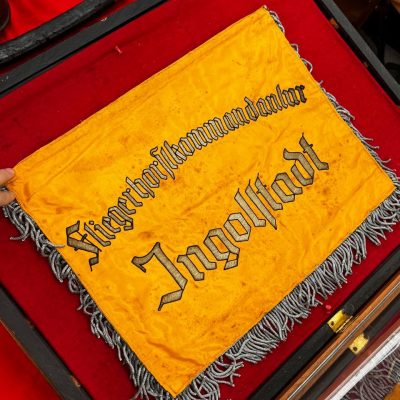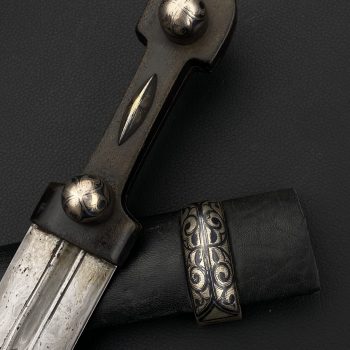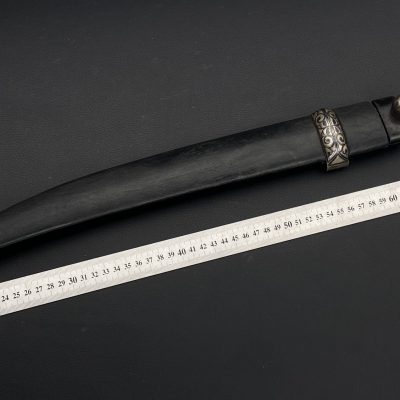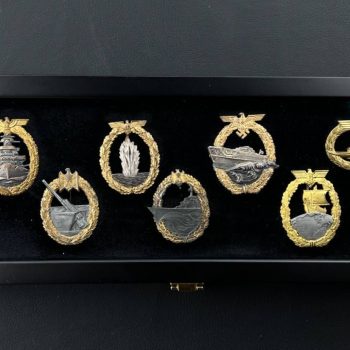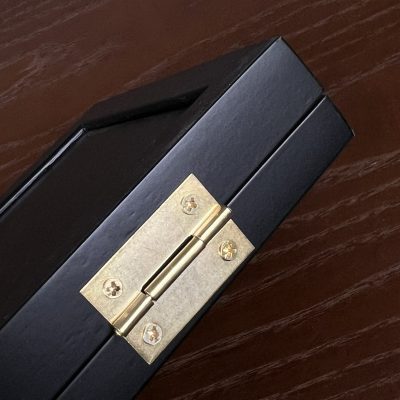Showing 17–20 of 20 results
Filters-
The Soldiers’ English and French Conversation Book – Walter M. Gallichan, 1917 (WWI Edition) (Lot: 391)
Starting bid: $ 80Original World War I military language handbook designed for British soldiers heading to the Western Front.
The upper cover inscription reads: “For the Man Going to the Front”.Compiled by Walter M. Gallichan and published by J. B. Lippincott Company (Philadelphia and London) in 1917, this New and Revised Edition contains hundreds of practical phrases and words enabling soldiers to communicate effectively with French and Belgian Allies during wartime.
The book includes sections on military operations (transport, trenches, action, wounded, billets, money, weights, etc.) as well as everyday vocabulary with phonetic pronunciation guides for English speakers.
Original blue cloth cover with black lettering, small pocket-sized format for field use — an authentic WWI-issued piece carried by Allied troops.
-
U.S. Army “French Language Guide” TM 30-302 – War Department, June 21, 1943 (Lot: 392)
Starting bid: $ 75Original WWII-era U.S. War Department language manual, issued to American servicemen preparing for operations in France and French-speaking territories.
Official designation: TM 30-302, “French: A Guide to the Spoken Language”, published June 21, 1943 by the War Department, Washington, D.C.This pocket-sized booklet was part of the Introductory Series Language Guides, prepared under the authority of General George C. Marshall, Chief of Staff, and Major General J.A. Ulio, The Adjutant General.
Printed by the U.S. Government Printing Office in 1943 (code: O-530662).The manual includes basic grammar, pronunciation guides, and hundreds of practical phrases for field communication—covering topics such as food, transportation, medical aid, military instructions, and social interaction.
Illustrated with a rear drawing of the Arc de Triomphe, symbolizing the liberation of France.Original blue softcover with the U.S. Great Seal and “TM 30-302” designation on the front. Typical pocket format used by GIs during the European campaign, especially around D-Day and the Normandy operations.
-
U.S. Army Command or Headquarters Collar Insignia (Silver Star with Great Seal) (Lot: 382)
Starting bid: $ 25Emblem in the form of a silver five-pointed star with a gold-colored Great Seal of the United States — an eagle holding a shield, olive branch, and arrows. Worn on the collar or cap by U.S. Army officers and enlisted personnel during and after World War II (1940s–1950s).
The reverse side bears the manufacturer’s hallmark. Attachment by two pin posts with brass clutch-back fasteners.
Sold at Blitz price
-
Japanese Naval Officer’s Dagger, Model 1883. (Lot: 62)
Auction EndedAn original Japanese naval officer’s dagger, Model 1883, is offered for sale.
This type of dagger was used by officers of the Imperial Japanese Navy from the late 19th century up to the early stages of World War II.
Specifications:
- Original blade with traditional shape
- Brass guard featuring naval insignia
- Grip wrapped in leather or traditional material (specify if known)
- Metal scabbard with period-correct fittings
- Condition: Good, with natural patina and signs of age
A rare and valuable piece for collectors of edged weapons and Japanese military history.
Product sold for blitz price: $ 1,450 -
German WWll Luftwaffe Trumpet Banner (Lot: 49)
Auction EndedThe front side features the Luftwaffe eagle, while the reverse side bears the inscription:
“Fliegerhorst Kommandantur Ingolstadt” (Airfield Headquarters Ingolstadt).
Fliegerhorst Ingolstadt-Manching Airfield
Construction of the airfield began in 1936 with the creation of taxiways, and from spring 1937 onward, various buildings were erected. In April 1938, the completed airfield was handed over to the military and officially named “Fliegerhorst Ingolstadt”.
During World War II, the base hosted various flight schools, including fighter and night-fighter schools, which operated Messerschmitt Bf 110 aircraft.
The Bf 110 was actively used during the French campaign, in the Battle of Britain (where it proved vulnerable against RAF fighters), and later as a night interceptor defending the Reich.
Its primary equipment included radar systems and heavy armament for engaging enemy bombers.
From mid-1944, the airfield was heavily bombed by Allied forces, with particularly intense raids in April 1945.
On April 26, 1945, the airfield was captured by the United States Army.
Product sold for blitz price: $ 4,250 -
Display case 6×14″ (Lot: 40)
Auction EndedOriginal Warstory display case. Features museum-quality, non-reflective glass with UV protection. Material: alder wood.
Product sold for blitz price: $ 110
